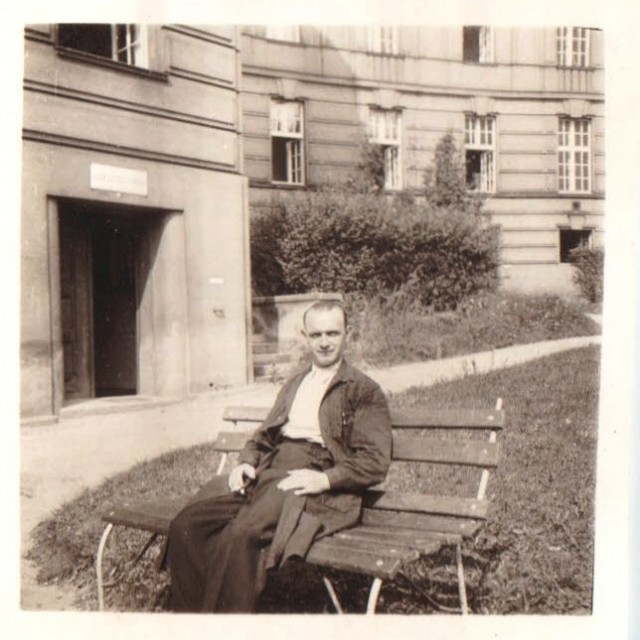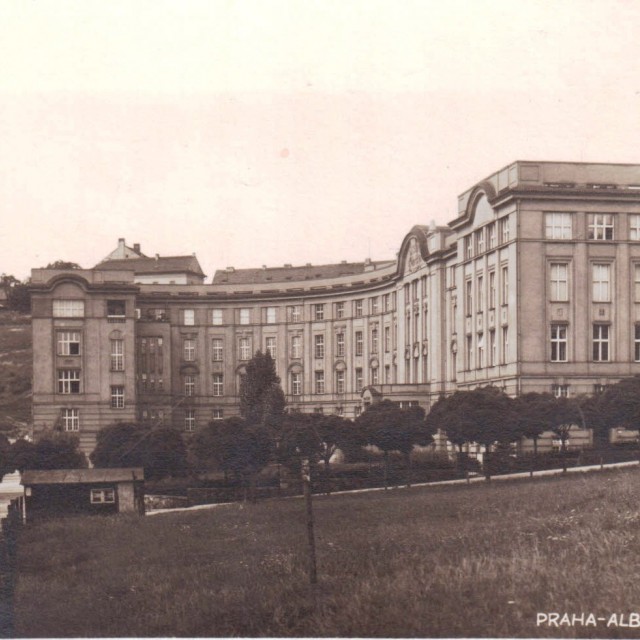He kept pigs,cut up the bodies of Wehrmacht soldiers and hid a friend
Josef Pánek, a distinctive attendant of the Forensic Institute in Albertov, during World War II illegally kept hens, pigs and even goats in the cellar of the Institute. He secretly carried out pig slaughters and exchanged the meat with the whole neighbourhood. Severe punishments were imposed on those keeping such an illegal “factory farm”: imprisonment or a concentration camp, during the Heydrichiade even death. He and his family were lucky, nobody reported them. Pánek was “playing with fire” in other ways too, his daughter recounts, a renowned literary scholar, publicist Květoslava Neradová, née Pánková. As an attendant of the Institute he had access to the autopsy room. The bodies of murdered resistance fighters and of German soldiers ragged by explosions were lying there. Many times he complied with the requests of the families of the resistance fighters to secretly give them the bodies of their murdered relatives. To make sure none of the deceased were missing, he assembled corpse torsos from the German soldiers’ torn limbs, so that no one would notice a body was stolen. In the Institute, Josef Pánek was also hiding a friend of his, who was of Jewish origin. He introduced him to his family as an uncle, who lived with them as their relative until the end of the war.
Hodnocení
Abyste mohli hodnotit musíte se přihlásit!
Trasy
Příběh není součastí žádné trasy.
Komentáře

Květoslava Neradová
Květoslava Neradová, a professor, author, and radio journalist, was born April 9, 1933 in Prague. She grew up in Albertov, where she witnessed the atrocities committed during the Prague Uprising in 1945. "As if the people became possessed by the devil," she recalls the hatred of Czechs against their German neighbours, with whom they had lived peacefully throughout the war, and who had nothing in common with the Nazis. Květoslava was often ill when she was a little girl, and she remembers that she spent many winters in bed, when she read a lot to pass the time. Her literary education is truly impressive. She graduated from Czech and Russian at the Faculty of Arts at Charles University. She focused on the baroque period, especially on texts by Bohuslav Balbín. When she was just 22 years old, in the early 1960s, she was already teaching old Czech literature at the university, and later she also added library science and history of culture. At the turn of the 1960s and 1970s she was organizing secret lectures for students and meetings with writers and actors in her home, including several sessions with actor Jan Werich. Someone from among her students informed on her, and from 1970 onwards, she was arrested repeatedly by the Secret Police. The StB policemen exerted physical and mental pressure on her during interrogations which lasted many hours and for seven years they tried to force her into collaborating with them. Among other, they wanted her to inform upon dissidents who were meeting in the Christian community called Vigil (Vigilie), which she founded together with several students (Tomáš Halík, who later became a priest in the underground church, was one of them). She consistently refused collaboration with the StB. In 1977, shortly after the issue of Charter 77, which she helped to copy and disseminate, the Secret Police ordered her dismissal from the faculty. Her former students helped her to get a job in the State Library, where she worked with several intermissions until 1990. Apart from the secret lectures and organizing of many anti-state events she also helped to spread samizdat texts. After the Velvet revolution in 1989 she returned to the faculty of journalism, and she founded the Christian College of Media and Journalism.




